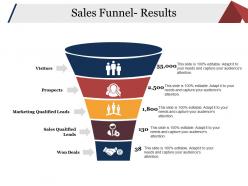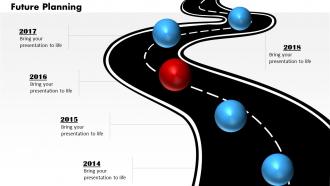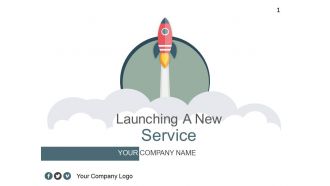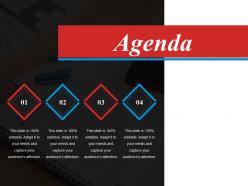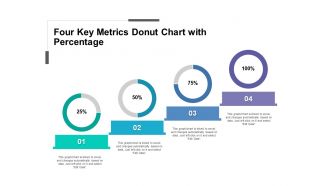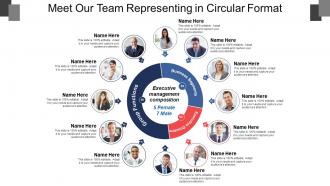Digging through piles of data manually to extract insights for making informed decisions is an ineffective business process. You can be sure you will never be able to complete this task. This raises the need for a methodical process for storing, managing and retrieving data that must also lend itself to easy review - a Data Warehouse.
In essence, a data warehouse stores data efficiently to minimize data input and output and deliver query results quickly to hundreds of thousands of users concurrently when they look for it on a search engine.
To keep your business competitive, SlideTeam provides you with some fantastic Data Warehouse PPT Templates to help you get started. You'll be well on your way to having better access to your business data with our designs. You'll be able to analyze it, identify trends, and make more accurate predictions for the future—and, as a result, make better business decisions.
Explore our collection now!
Template 1: Data Warehouse PPT Deck
A Data Warehouse is a collection of data that pertains to the entire organization rather than a specific group of users. This technique is known as Extract Transfer Load (ETL), where the purpose is to go sequentially through data. By pitching yourself using this prefabricated set, you can engage buyer personas and increase brand awareness. Because it contains high-quality content, this Data Warehouse Powerpoint PPT Template is an excellent tool for connecting with your audience. Download now!
Template 2: Data Warehouse IT PPT Deck
Data warehousing is the safe electronic storage of information in a corporation or other organization. Data warehousing aims to generate historical data that can be accessed and analyzed to provide valuable insight into business operations. This deck presents the company's current situation, gap analysis, the business's need for a data warehouse, and so on. This deck includes the business impacts of data warehouse implementation, a 30-60-90-day plan, a data warehouse implementation roadmap, and a dashboard. Get it right away!
Template 3: IT Best Practices For Data Warehouse Implementation
Data warehouses are central repositories for storing and analyzing information in order to make more informed decisions. Display information on whether performance and security management is on track, automate maintenance processes and strategic cloud usage, Provide an agile architecture and maintain data quality standards, and so on, with this PPT Slide. Download now!
Template 4: Data Warehouse PPT Slide
You can always think ahead of your competitors if you use the right data warehousing platform. Investing in a good data warehouse will help your company rise to the top of the competition. With our slide, you can get information on data sources, enterprise Data Ware Houses (DWH), and tools to make you and your team understand how the concept works. Download now!
Template 5: How Data Warehouse Works Business Intelligence Solution
A data warehouse converts relational data and other data sources into multidimensional schemas for analysis. This slide shows how the data warehouse works, including how operations like extraction, transformation, and loading are performed on data stored in the warehouse. Using the provided slides, disseminate information and provide a thorough explanation of comprehensiveness, performances, and consumers. Get it now!
Template 6: Cloud Migration Framework With Data Warehouse
To be as prepared as possible, you must thoroughly research the challenge, mitigate risk, and plan your migration. This Cloud Migration Framework with Data Warehouse PPT Design covers topics such as migration, framework, and warehouse. It improves your agility, scalability, and security. Get it as soon as possible!
Template 7: Data Warehouse IT Comparison Between Database and Data Warehouse
When an organization wants to analyze data from multiple sources, it may decide to supplement its databases with a data warehouse. Each database and data warehouse serves a distinct purpose. This template highlights a number of significant differences between the two subjects. Begin downloading right away.
Template 8: Data Warehouse Operational System Architecture
A data warehouse operational system architecture is a method of defining the overall architecture of data communication, processing, and presentation for end-client computing within the enterprise. The topics discussed in this slide are data warehouse, operational system, architecture, etc. Download now and see your business grow quickly.
Template 9: Data Warehouse Framework With CRM and Analytics
Look no further if you want to arm yourself with the best data warehouse learning materials and resources. This template will teach you everything you need to know about data warehousing frameworks and CRM analytics. With this content-ready slide, you can learn about analytics, data mining, reporting, and billing. Our data analytics PPT Template will assist you in beginning your journey to becoming a data warehouse expert. Download now!
Template 10: Functions of Data Warehouse PPT Slide
Data Warehousing is a technique for collecting and managing data from sources in order to provide meaningful business insights. With our PPT Slide, you can learn about the functions of data warehouse tools and utilities. Know about data extraction, data cleaning, transformations, etc., and see how it benefits your work in the future. Download now!
Complete that jigsaw!
Think of your data warehouse presentation as a puzzle. Each piece represents a different aspect, and without all of the pieces in place, the picture is incomplete. But with our PPT templates, you'll have all the elements necessary to complete the puzzle and make a compelling case for your data warehouse. From clear and concise data visualization to professional layouts, our templates provide everything you need to communicate the value of your data warehouse effectively. Don't let a missing piece ruin your presentation. Use our PPT templates to put the puzzle together.
FAQs on Data Warehouse
How do you structure a data warehouse?
A data warehouse typically follows a three-tier architecture, which includes the following components:
The bottom tier, or the data source layer, is where the raw data is collected and stored. It can include data from sources such as transactional databases, flat files, and external data sources.
The middle tier, or the integration layer, is where the data is cleaned, transformed, and integrated. This process involves data profiling, data cleansing, integration, and transformation. The data is then stored in a format that is optimized for querying and reporting.
The top tier, or the access layer, is where the data is accessed and analyzed. This layer includes a relational database, multidimensional database, or other data storage technologies, where the data is stored in a format that is optimized for querying and reporting. Business Intelligence (BI) tools such as reporting, online analytical processing (OLAP), and data mining are used to access and analyze the data.
What is OLAP in data warehousing?
OLAP stands for Online Analytical Processing. It is a category of software tools that allow users to analyze data from multiple dimensions and levels of detail. In the context of data warehousing, OLAP is used to analyze large amounts of data stored in a data warehouse. It is designed to provide fast, interactive access to data.
Why is a data warehouse critical for a business?
A data warehouse is critical for a business because it provides a centralized and consolidated view of the organization's data. It allows for the collection, storage, and analysis of large amounts of data from different sources, such as transactional systems, external data sources, and flat files.
Data warehousing enables organizations to:
Improve Data Quality
Increase Data Accessibility
Gain Data Insights and Trends
Support Data Compliance and Governance




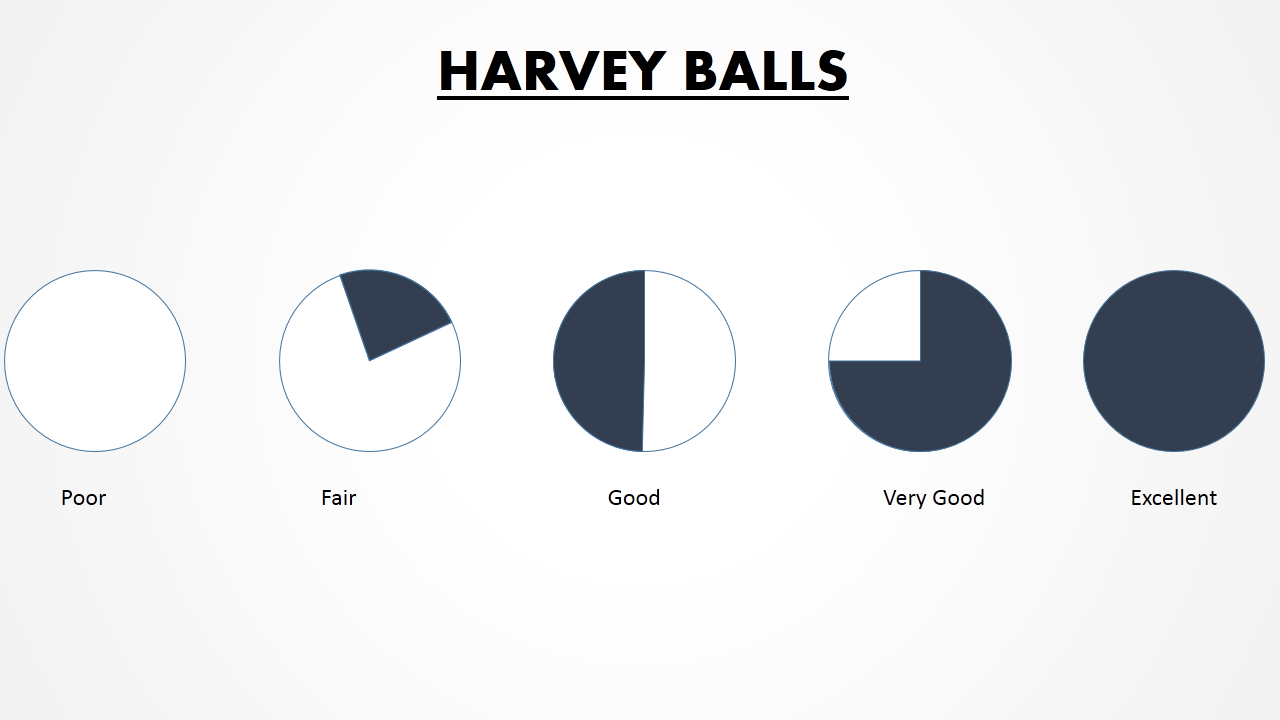

 Customer Reviews
Customer Reviews















![Top 10 Data Model Templates to Understand Information Structures [Free PDF Attached]](https://www1.slideteam.net/wp/wp-content/uploads/2022/07/1013x441no-button-3-493x215.gif)



